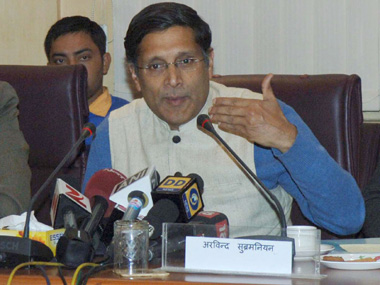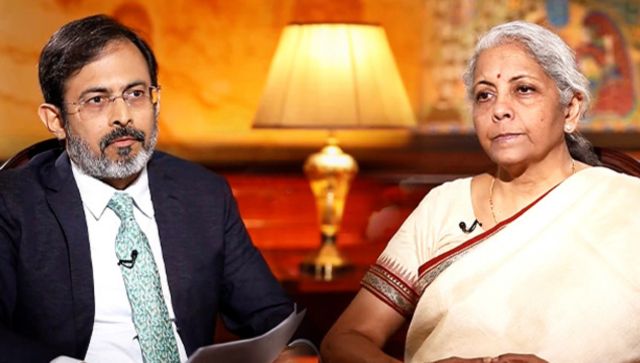If Raghuram Rajan seized the demographic dividend and Kaushik Basu laid the micro-foundations of macroeconomic policy, chief economic adviser Arvind Subramanian offers us a subsidy management ‘Nirvana’. His Economic Survey powers the argument of targeted subsidies like none other. Going beyond the usual homilies and recital of the state of the economy – the need for investment in order to deliver an economic growth of more than 8 percent, forecasts of 4.1 percent fiscal deficit and 5.0-5.5 percent inflation rate and the overarching Make in India aspiration – Subramanian argues, with data and facts, why we need to revisit subsidies.
More important: how to target them better. Subramanian’s Chapter 3 – ‘Wiping every tear from every eye’: the JAM Number Trinity – is a study in how to address poverty with data rather than perceptions and keeping fiscal constraints in mind. From rice, wheat and pulses to kerosene, fertlisers and railways, “Price subsidies have formed an important part of the anti-poverty discourse in India,” Subramanian writes. “The estimated direct fiscal cost of this illustrative subset of subsidies is about Rs 378,000 crore or about 4.24% of GDP. Just to give a sense of how large this amount is: Rs 394,000 is roughly how much it would cost to raise the expenditure of every household to that of a household at the 35th percentile of the income distribution (which is well above the poverty line of 21.9%).” The statistics on how the subsidies are being mismanaged and not being able to reach the beneficiaries — the poor — are mind-numbing:
• On a subsidy of Rs 51,000 crore, the bottom 80 percent households comprise just 28.1 percent of Indian Railways’ passengers • Subsidy on LPG cylinders, the middle class vote decider, stands at Rs 23,746 crore but the bottom 50 percent of households consume only 25 percent • Most of the benefits of Rs 73,790 crore subsidy on fertilsers are derived by manufacturers, since farmers, especially poor farmers, have elastic demand • While the average monthly consumption of bottom quintile households stands at 45 kWh, the top quintile consumes 121 kWh; further, the bottom quintile captures only 10 percent of electricity subsidy, with 37 percent of the Rs 32,300 crore fiscal burden being on account of the top quintile • The list goes on to include rice, wheat, pulses, water, kerosene Concluding that price subsidies are regressive, distort markets that ultimately hurt the poor, and leakages undermine the effectiveness of product subsidies, Subramanian offers a solution: the JAM Number Trinity — Jan Dhan Yojana, Aadhaar and mobile numbers — that allows the state to offer subsidies to poor households in a targeted and less distortive way. According to him, in December 2014, there were 720 million citizens carrying Aadhaar cards. Linking this number to a bank account through the Jan Dhan Yojana allows for a direct transfer of money. Finally, with more than 600 million unique mobile phone users, 370 of whom live in villages, mobile money becomes a viable alternative to bridge the last mile connectivity.
If all subsidies can be rolled into one or few direct income transfers, Subramanian says, a “Nirvana” would be within reach. “It will be a Nirvana for two reasons,” he says. “The poor will be protected and provided for; and many prices in India will be liberated to perform their role of efficiently allocating resources in the economy and boosting long run growth. Even as it focuses on second generation and third generation reforms in factor markets, India will then be able to complete the basic first generation of economic reforms.” In his press conference, Subramanian alerted journalists to not look at the Economic Survey as anything more than wishful policy thinking. But to me, this chapter articulates the dominant thought in a government that has embraced a variety of reforms already – deregulation of diesel, direct transfers in cooking gas, instituting the expenditure management commission, opening FDI in defence, labour reforms in Rajasthan. Taking the past as a signal, here’s my forecast. I get a sense that Subramanian is underplaying this idea. For now, he has placed it on the debating table. Over the next six months we will discuss the nuances of these subsidies. And in the next 12 to 18 months, the first experiments with them will begin. There will be some successes and some failures. But before the term of this government is over, JAM Number Trinity, or its modified avatar, would be a living reality.


)




)
)
)
)
)
)
)
)